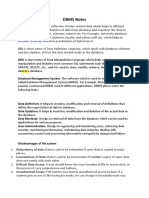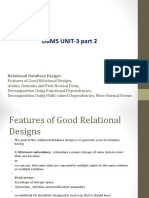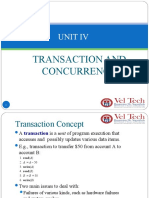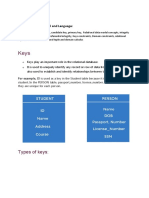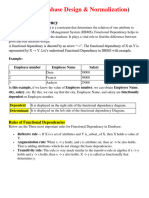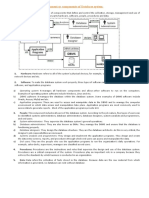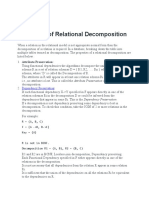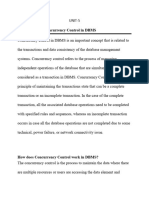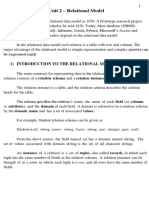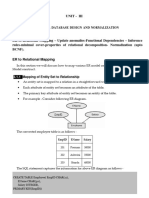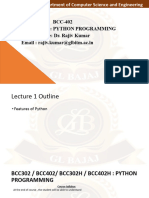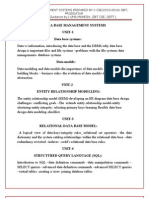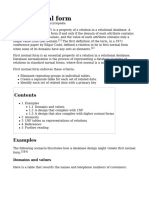100% found this document useful (2 votes)
2K views73 pagesDBMS-Relational Data Model
The document discusses the relational data model. It provides formal definitions of key concepts in the relational model, including relations, attributes, domains, tuples, relation schemas, and relation states. It describes how relations are modeled as mathematical sets of tuples, with each tuple composed of attribute values drawn from predefined domains. Constraints that relations must satisfy, such as key, entity integrity, and referential integrity constraints, are also covered. The document aims to explain both the informal and formal concepts underlying the relational model of data.
Uploaded by
Raghavendra 333Copyright
© © All Rights Reserved
We take content rights seriously. If you suspect this is your content, claim it here.
Available Formats
Download as PPT, PDF, TXT or read online on Scribd
100% found this document useful (2 votes)
2K views73 pagesDBMS-Relational Data Model
The document discusses the relational data model. It provides formal definitions of key concepts in the relational model, including relations, attributes, domains, tuples, relation schemas, and relation states. It describes how relations are modeled as mathematical sets of tuples, with each tuple composed of attribute values drawn from predefined domains. Constraints that relations must satisfy, such as key, entity integrity, and referential integrity constraints, are also covered. The document aims to explain both the informal and formal concepts underlying the relational model of data.
Uploaded by
Raghavendra 333Copyright
© © All Rights Reserved
We take content rights seriously. If you suspect this is your content, claim it here.
Available Formats
Download as PPT, PDF, TXT or read online on Scribd
/ 73



